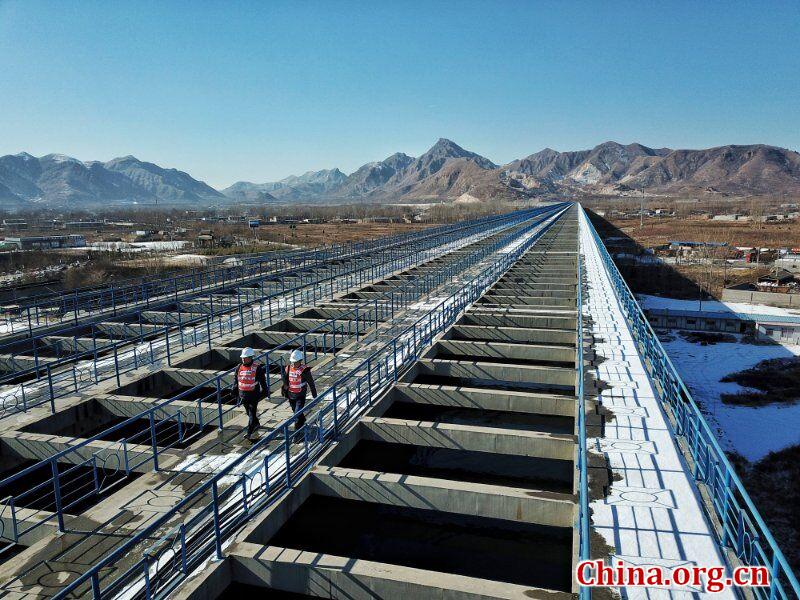Central route of water diversion project crosses 20 billion cubic meters mark
As of Feb. 15, the central route of the South-to-North Water Diversion Project had cumulatively transported 20 billion cubic meters of water to northern China.
As of Feb. 15, the central route of the South-to-North Water Diversion Project had cumulatively transported 20 billion cubic meters of water to northern China. Since its official opening on Dec. 12, 2014, the central route has transferred from the Danjiangkou Reservoir a total amount that is equivalent to one-third of the Yellow River.

More than 53 million people from Henan, Hebei, Beijing and Tianjin along the central route project now get access to clear water diverted from the south. Of all the 20 billion cubic meters of water, excluding the amount of water retained and evaporated through the channels, 6.7 billion cubic meters is distributed to Henan province, 4 billion to Hebei province, 3.6 billion to Tianjin, and 4.3 billion to Beijing.
In Henan, 37 cities and counties have benefited from the water diversion project, and in the province's capital city Zhengzhou, more than 80 percent of tap water is sourced from the south. In the neighboring Hebei, more than 75 percent of the main urban areas of cities including Shijiazhuang, Handan, Baoding and Hengshui are supplied with water diverted from the south. In Beijing, the hardness of tap water has fallen from 380 milligrams per liter in the past to 120 or 130 milligrams per liter now.
Monitoring shows that the quality of water transferred through the central route project has remained at a high level, and 82 percent of the water has reached the standard of Class I. In addition, the first phase of the central route project has provided ecological water supply to 30 rivers in the receiving areas for two consecutive years, which has brought in remarkable ecological benefits.

